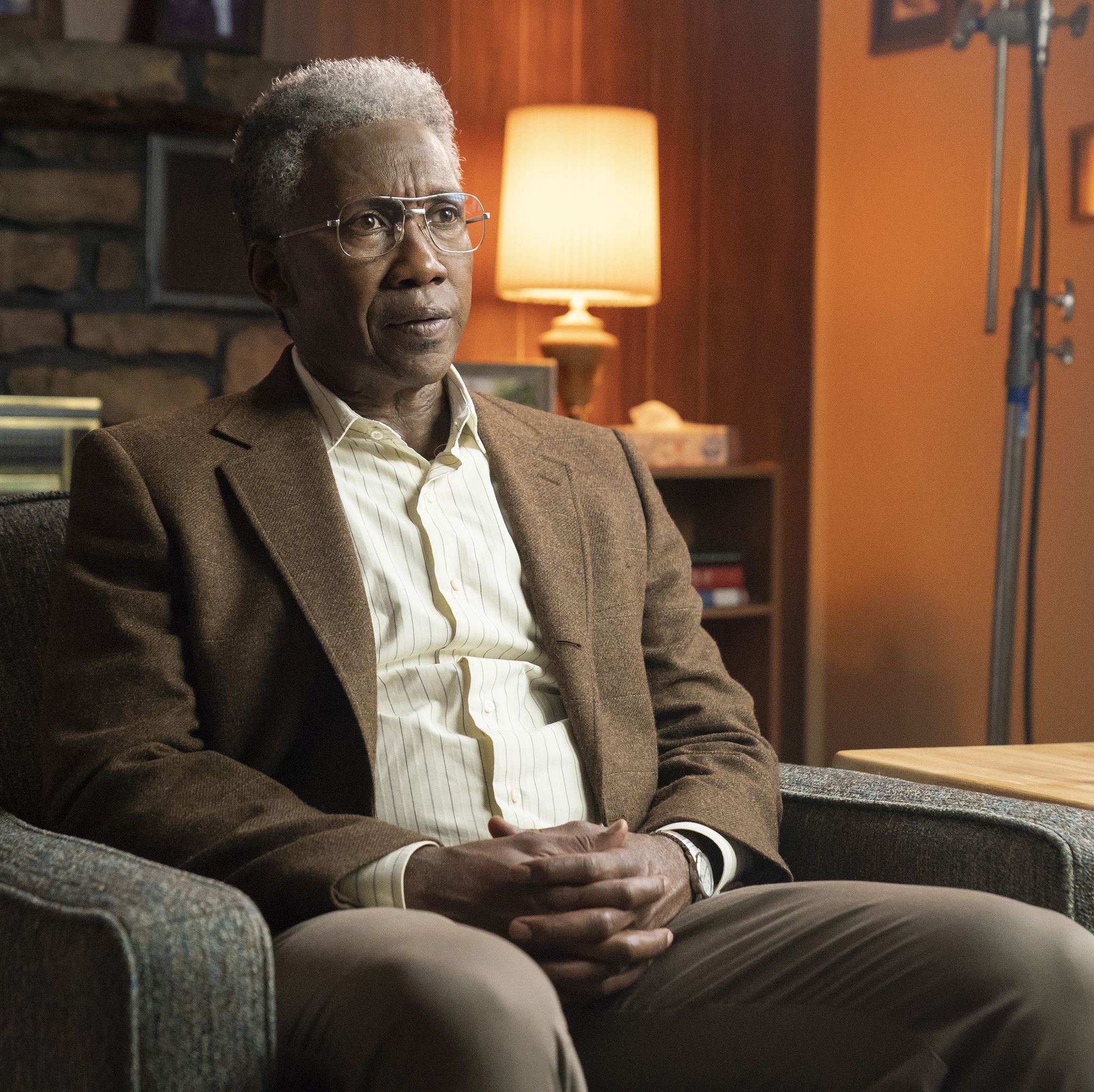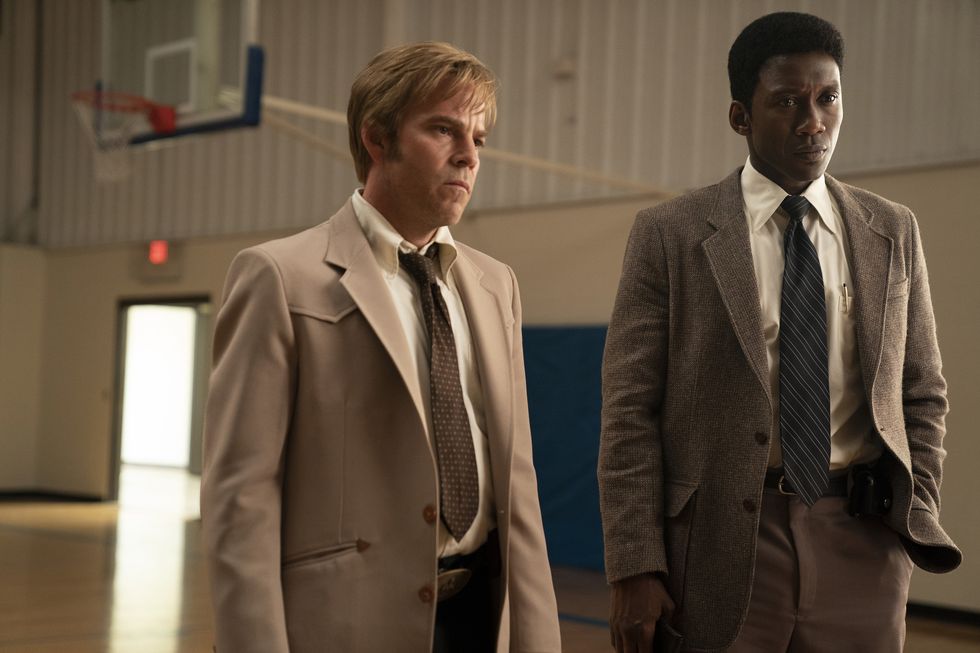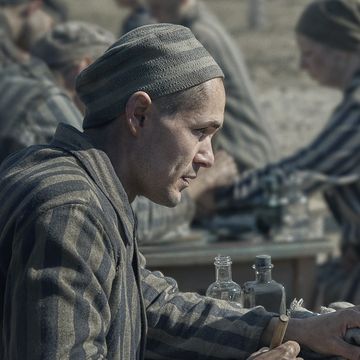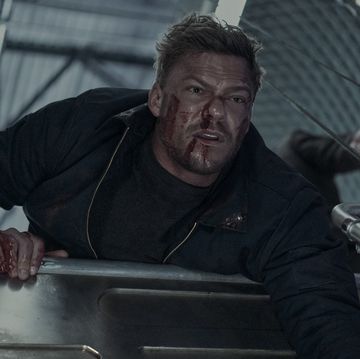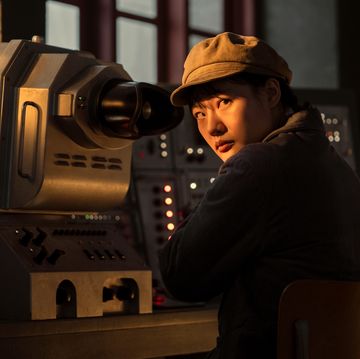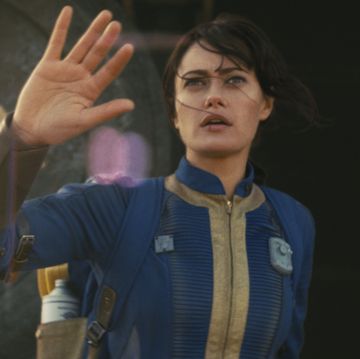HBO sent critics the first five episodes of True Detective. But in the spirit of authenticity and spoiler prevention, I’m watching the episodes week-by-week along with the audience. In other words, I don’t know what’s going to happen next, so any and all predictions or theories I have are genuine. Certainly I would like to binge watch this show, but I’m really taking one for the team here. Consider me the True Critic.
The first words we hear in True Detective season three are: “Yeah, of course I remember.”
That’s Mahershala Ali’s Wayne Hays sitting down for a deposition on May 12, 1990. But as we quickly find out, that’s absolutely not the case. The show immediately jumps to its second of three timelines as Hays is in his room on May 20, 2015, preparing to go to an interview for a documentary. As we see him getting ready, he picks up a recorder where we hear Hays’s voice say:
You’re having memory problems don’t wine about it. Today is May 20, 2015. Henry is coming with people from the TV. If you don’t like the questions or you don’t want to do it, Henry will tell them to go screw. But remember why you’re talking to them. You forgot how much they know. You don’t need surprises this late in the game. I’m recording this on the 19th, today is the 20th. Look at your pictures. Take notes. Remember the nightstand if you need it.
And that—of all the clues that set up this murder mystery—is the most important one we get in the first episode of True Detective's third season. We know, right away, that this story is being told by an unreliable narrator.
Hays in 2015 is in the early stages of dementia and appears to be providing himself with voice recordings of what he remembers as he speaks with a documentary crew about the disappearance of of a 12-year-old boy and his 10-year-old sister on November 7, 1980—“the day Steve McQueen died,” as we’re reminded throughout this episode.
And so, in extremely True Detective fashion, this season plays out over three timelines: in 1980, when the original murder takes place; in 1990, when the case is reopened; and in 2015, when the case is the subject of a new documentary. Given these Inception-style levels of memory, it’s likely that the voice in the recorder is the main narrator of this story. And this set-up introduces an interesting concept of how memory—which is never accurate, even for someone not suffering from dementia—can manipulate the truth.
If Hays is indeed our True Detective, can we actually believe the story he’s telling whether he intends to be factual or not? Unraveling this—at least early in the season—comes down to Ali’s incredible performance. As he says to the documentarians, it used to be Before Vietnam and After Vietnam. But now he thinks of his life as before the case and after. So in essence, we’re seeing Ali play three very different men. There’s 1980 Hays, the quiet, simmering Vietnam vet—a cop who tracks wild boar for fun. There's 1990 Hays, the cop whose life was changed after the horrors of this case, foreshadowing a gruesome murder that overshadows what he saw in the war. Then there’s 2015 Hays, the old man who is mourning the loss of his wife and haunted by his fading memories. Ali plays each with subtlety from 2015 Hays’s breathy gravelly voice, to the lost soldier of 1980, to the determined hardened cop of 1990. When the voice in the recording says, “Remember the nightstand if you need it,” we see that in the nightstand is a gun—presumably for Hays to use in order to take his own life. What is it Hays can’t live with? Is it the death of his wife? His deteriorating mind? The events of this murder? Or something worse?
The outline of this crime from what we know now is this: The two Purcell children take their bikes out; when they don’t come home, their father calls the police. Hays and his partner, Roland West (Stephan Dorff), respond to the report and find that the mother and father have a dysfunctional relationship. In the house they also find a peep hole, drilled into wall the little boy’s room, that looks into the daughter’s room—evidently made by their uncle who was staying there. They investigate a number of suspects including some local teens, a Native American the locals call "Trashman," and the father. Eventually, Hays comes across a gruesome scene in the woods, where the boy’s body has been left on a rock pedestal surrounded by creepy-ass dolls. The girl is nowhere to be found. Someone is later convicted of the crime (we don’t know who yet).
But in 1990, things have changed. That conviction is in the works of being overturned, as the girl’s fingerprints have been found at a crime scene at a Walgreens in Oklahoma a decade after she was supposedly murdered.
It’s a compelling premise, and without walking through the three timelines, it can seem complex on the surface. But with that mapped out, we have the groundwork for what promises to be a dark and twisted murder mystery.
Matt Miller is a Brooklyn-based culture/lifestyle writer and music critic whose work has appeared in Esquire, Forbes, The Denver Post, and documentaries.
